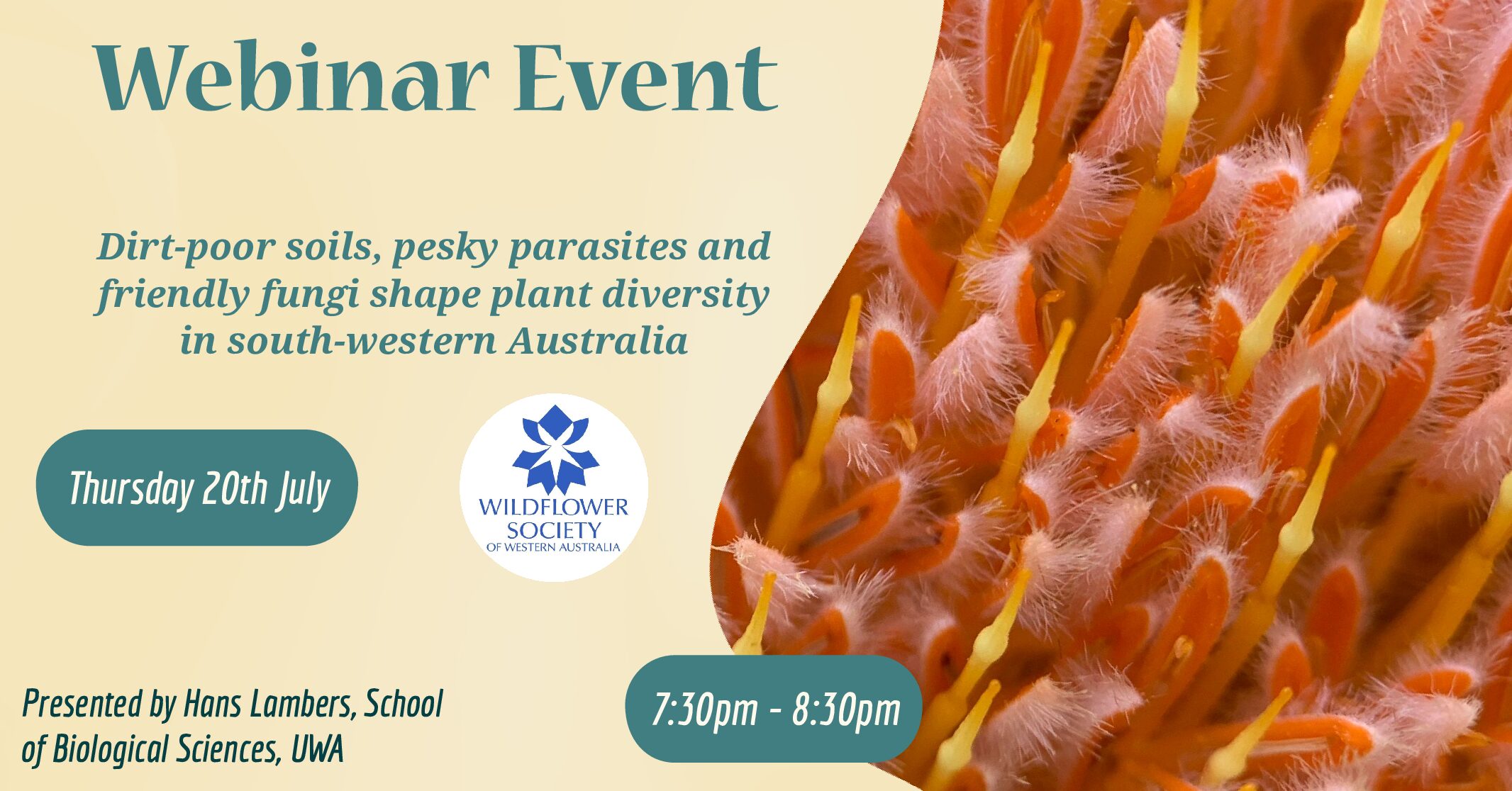
- This event has passed.
Dirt-poor soils, pesky parasites and friendly fungi shape plant diversity in south-western Australia
20 July, 2023 @ 7:30 pm - 8:30 pm
Free
Please join us for our first webinar series!
Presented by Hans Lambers, School of Biological Sciences, UWA
Click ‘Reserve Tickets’ and you will receive a confirmation email with the Zoom meeting link attached. This link is only available to those who reserve tickets.
Southwest Australia is a biodiversity hotspot, with the greatest plant diversity on severely phosphorus-impoverished soils. Non-mycorrhizal plant families (e.g., Proteaceae) feature prominently on the poorest soils, and are uncommon on richer soils.
The ecological success of Proteaceae on severely impoverished soils can be explained by two traits. Almost all Proteaceae produce cluster roots, which mobilise the scarcely-available but essential element, phosphorus. Australian Proteaceae also use phosphorus very efficiently in photosynthesis, and show a tremendous capacity to remobilise it from senescing leaves.
But the Proteaceae are only one component of the extraordinary plant diversity. Why do species with a less effective phosphorus-acquisition strategy coexist with ones that are far superior in extracting phosphorus from our extremely poor soils? Facilitation by neighbours definitely plays a role, and nutrients mobilised by Proteaceae are also used by neighbours without this strategy. It is only part of the story, however, and we are unlocking the next chapter of how native parasites (oomycetes or water-moulds) also contribute to the megadiversity in the southwest.
The Wildflower Society uses its independent technical knowledge of WA’s wildflowers to help you better know, grow, enjoy and conserve the wildflowers of Western Australia.
We are committed to providing help to the following…
